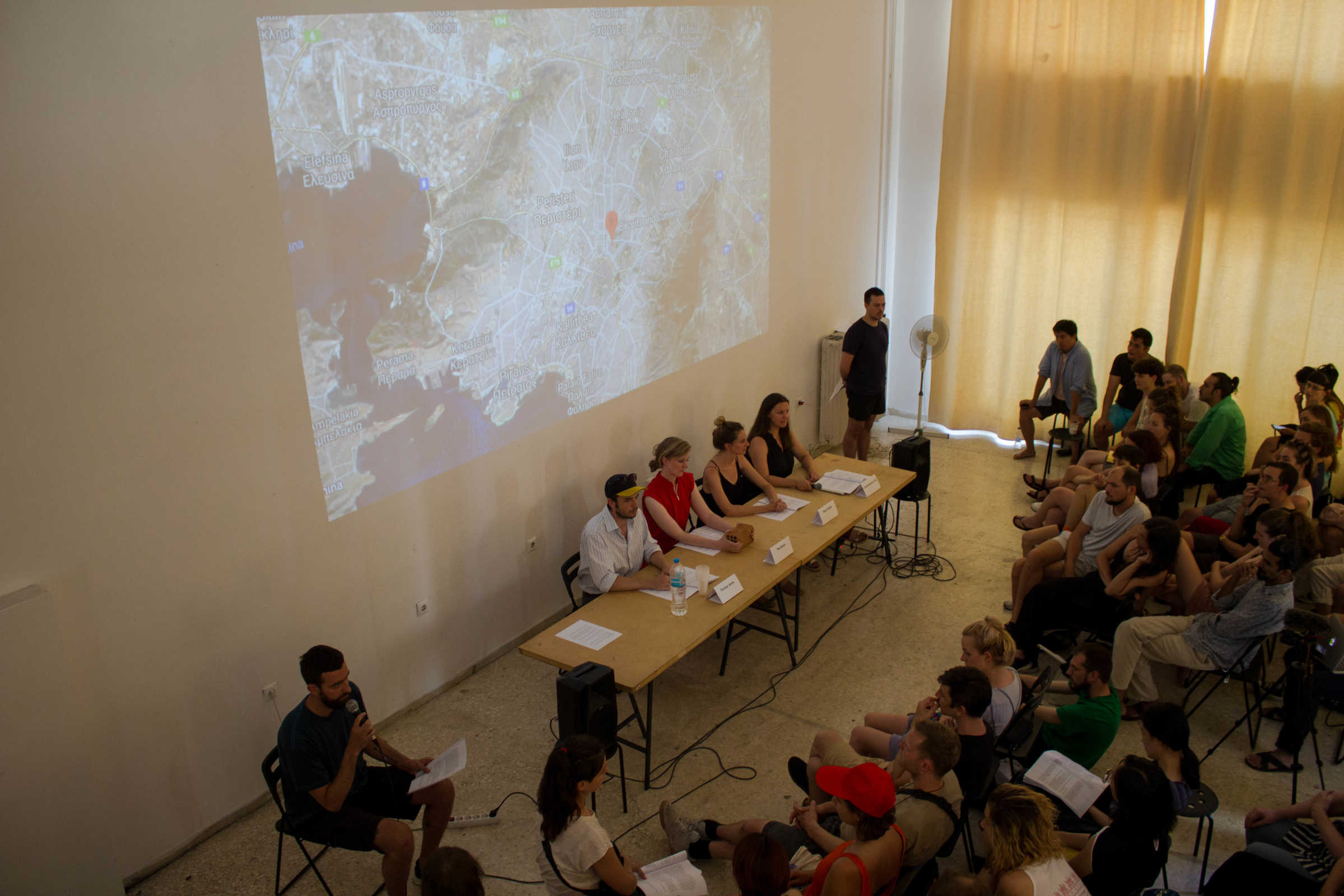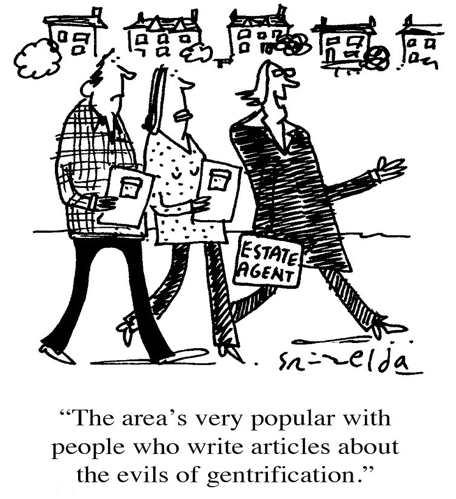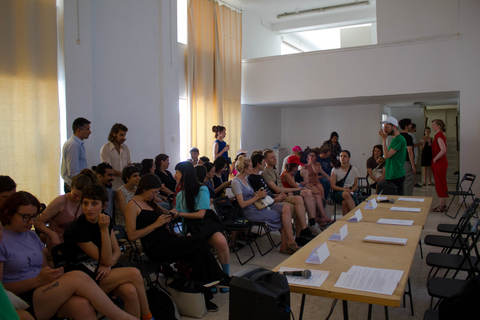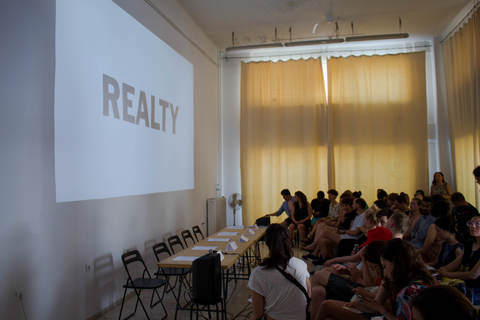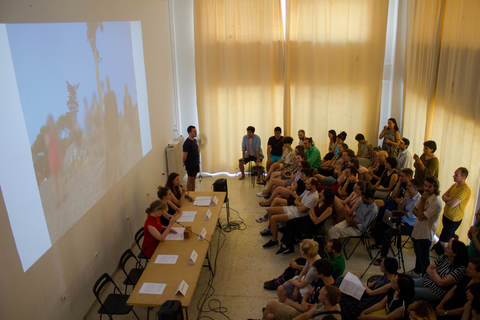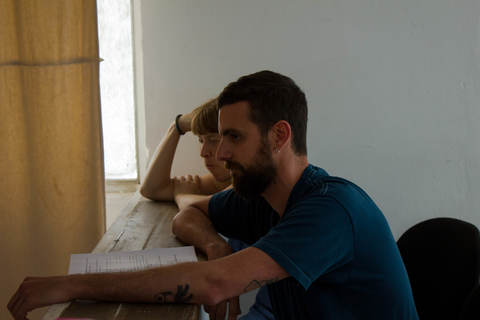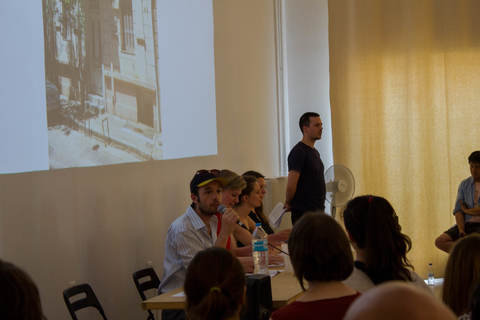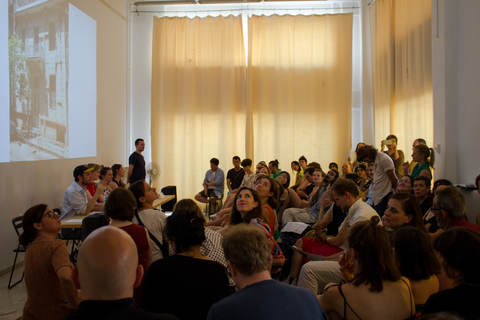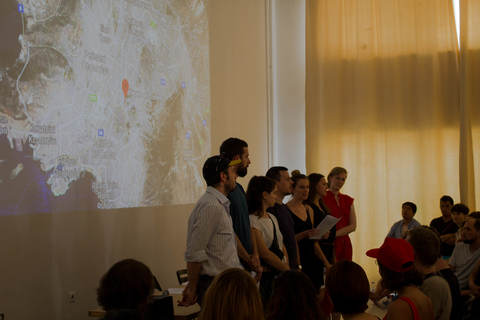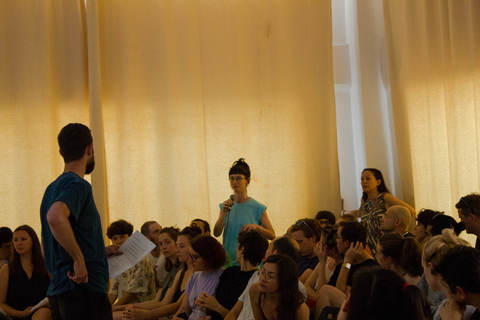2017-2018 COOP study group: Realty ~ Rachel O’Reilly, Katya Sander, Tirdad Zolghadr.
Students: Anna Bitkina, Matthieu Blond, Stephan Blumenschein, Luca Carboni, Sara Cattin, Samantha McCulloch, Dina Mohamed and Nina Støttrup Larsen.
REALTY
focuses on the role of Contemporary Art in recent histories of urban development and gentrification. In attending to this space we meet a stark and grisly example of art’s power effects today. Fundamentally, as an industry invested in nuanced games of propertization, finding productive responses to art’s own entanglements with spatial injustice has evolved into something of a fraught holy grail within the field internationally. The issue immediately meets with polarization, boredom and frustration simultaneously, while successful projects countering the worst of gentrification logics are few and far between. How is it possible to redefine the possible rules of engagement, seeing as each and every artist, venue, and every model of contemporary art’s expansion can inevitably be unmasked as part of the problem? For fear of being stuck in only theorizing failures, this project will attempt to avoid the usual modus operandi by insisting on several working premises in tandem.
To begin, we will appraise the very conditions of production within the field. Without regulating the ground it stands on, contemporary art cannot help but further contribute to the commodification of living space. Here, we will revisit concepts of property and rent, financial speculation and development, and the changing role of the global city in contemporary accumulation and segregation processes. We will approach artist’s remuneration, individualized competition and professional regulations in the context of such conditions.
Secondly, we will appraise the dynamic role of scapegoats in contemporary histories and discourses. This second working premise aims to transfigure protocolized defensiveness and aristocratic melancholia around facts at hand, towards the vulgarity of suggestive and propositional practices. It is easy to find iconic examples of scapegoats in the study of gentrification; these are infamous models that we want to avoid repeating. And yet, scapegoats as such are treated here as the best places and sites from which to begin reorganising the conversation, materially, and at the level of imagination. The question being how the newfound traction of contemporary art as we know it can be used to maximum effect, here and now.
Art’s extractivist relation to location is a third premise that we will use to recognize the extent to which contemporary art is assumed by its producers and promoters to be a critical, disruptive force, subversive by virtue of being creative, and vice versa. This very self-image makes it easy to instrumentalize artists for the purposes of gentrification. More critical attention to the production and extraction of value includes here the possibilities to exploit the moral claims of Contemporary Art,towards quite different ends. Amidst the general decline of regulatory ideals and the rise of moral politics in gaps left by neoliberal governance, understanding contemporary art as normatively extractivist enables us to hold ourselves to higher standards of accountability. Possibly this could include offering platforms for variegated neighborhood initiatives, rechanneling investment and cultural capital towards actually reproductive purposes, and using art’s speculative zing to envision better neighborhoods, beyond the bordered space of Art. Here, we will be engaging with the case of art and artists in Athens before and beyond the specific ‘case’ of Documenta 14. Maria Eichhorn’s contribution “Building as Unowned Property” will serve as a focalizing project on various levels.
The course as a whole aims for a better grasp of the ways in which we are confronted with planetary developments in our own practices. Which patterns can be compared across the globe? How and why are some cities becoming more and less like others, and being reorganized across space? To what extent can certain processes and patterns be foretold, explained, preempted or resisted? What common ground is to be found in histories and ongoing patterns of uneven developments, and in the relationship of Contemporary Art to these today?
Finally, in view of our collective project, we aim for New Criteria. Practical confidence, and solid conceptions of strategy, will emerge from our seminar-long efforts at widening our range of non-art partners in dialogue and conversation. These might include policy makers and advocacy groups to scholars and media makers working at the coalface of gentrification processes. This is a chance to take the artworld’s own progressive principles at face value: local specificity and differentiation, sustainability, social justice, internationalism, auto-didacticism, the marriage of aesthetics & politics, the union of theory & practice, and so on.

